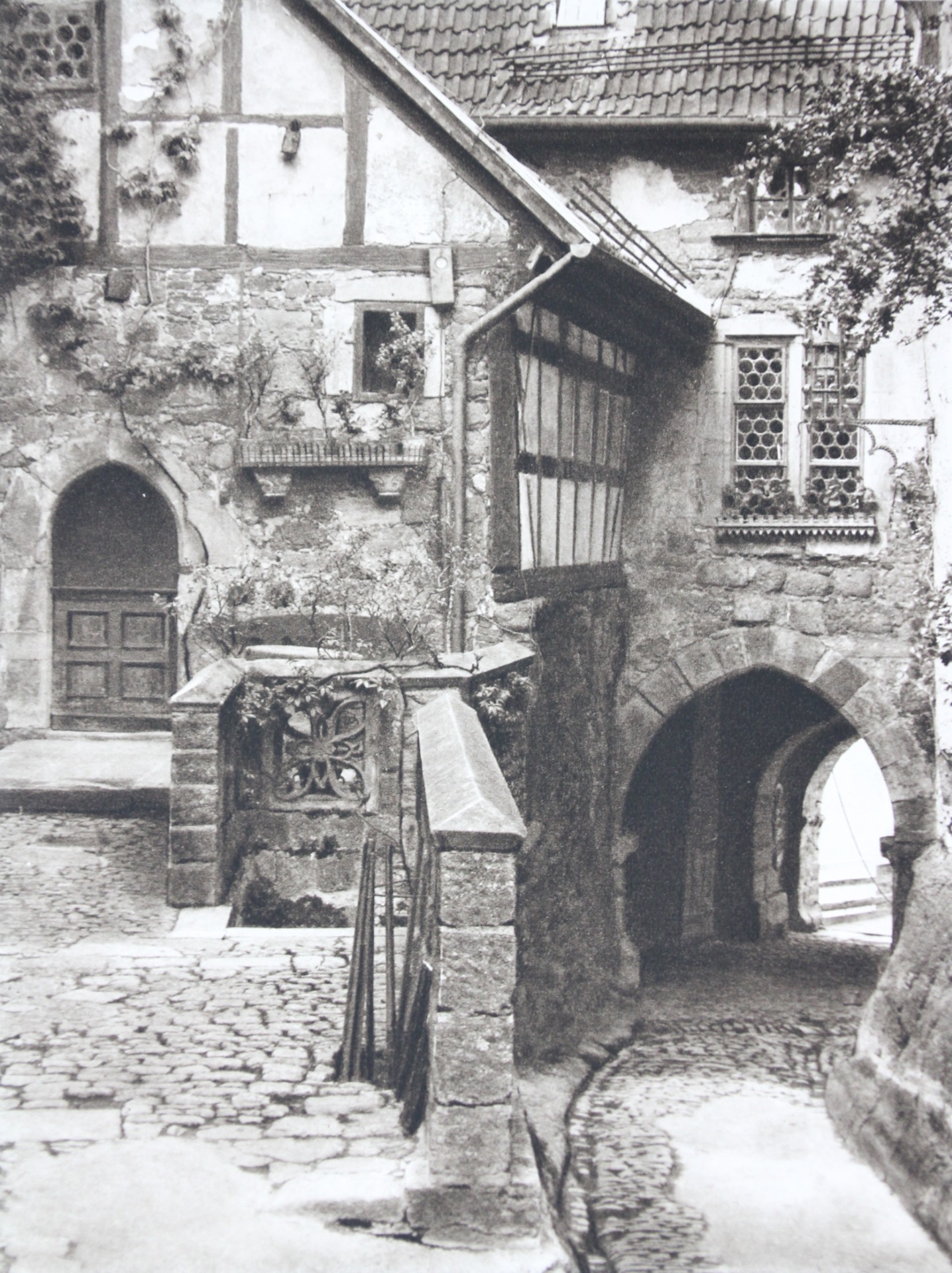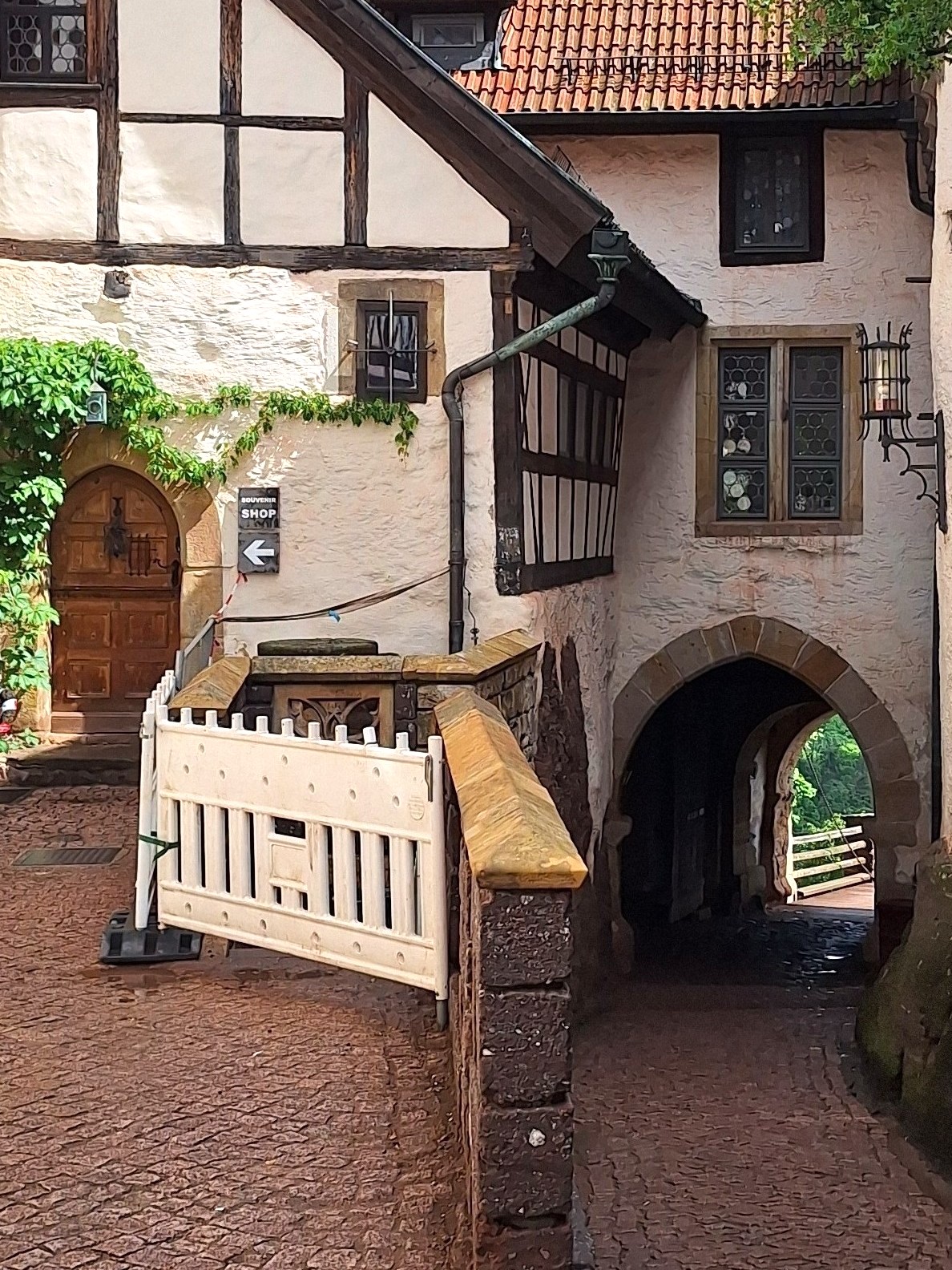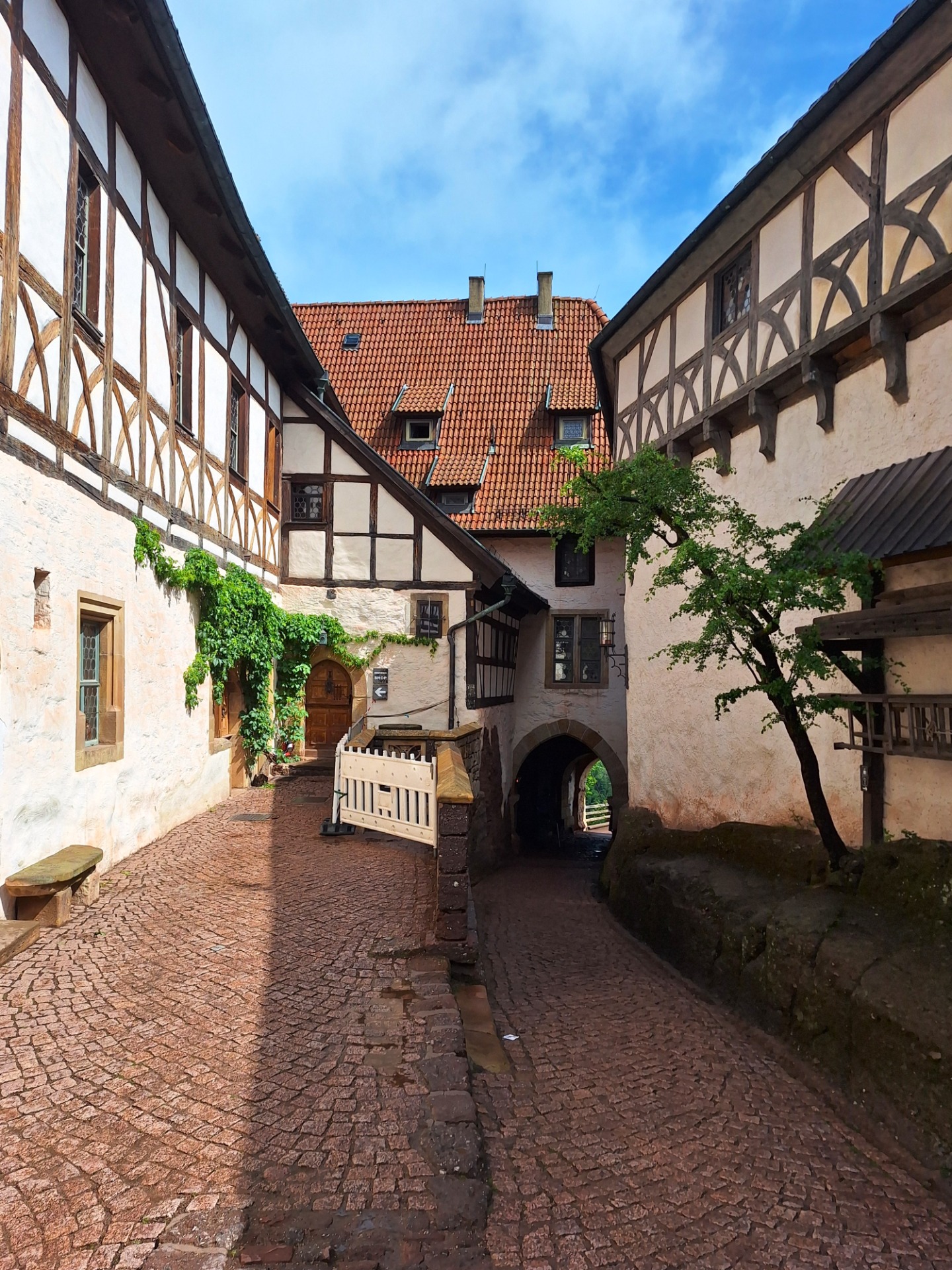Wartburg
Leaving lovely Fritzlar during the long Pentecost weekend in 2025, we moved on to Wartburg Castle near Eisenach. Luckily, we could also leave behind the extensive rain from that morning. Here in Wartburg, the sun started to shine again. We got impressed by the Castle, the decorated rooms and its history. And I managed to rephotograph the five photos from Kurt Hielscher (the others will follow later).
On October, 18th 1817 about 500 students, members of the newly founded German Burschenschaften, student associations gathered at the Castle to celebrate the German victory over Napoleon four years earlier. They called out for German unity and also used the 300th anniversary of the Reformation to do so, hence the 1st so called Wartburg Festival. This event and a similar gathering during the peoples revolutions of 1848 turned out a groundbreaking for the German unification movement.

Wartburg, 1924. Photo: Kurt Hielscher.

Wartburg, 6th of June 1925. Photo: Casper Molenaar.
Sorry, but I had to cut of a piece of Germany's flag to get both photos well aligned. And I know how important the Castle of Wartburg is for German statehood and for the development of Christianity.

Let's explore the Castle inside its walls. It is free of an entrance fee, but there's a paid guided tour I highly recommend though it is in German, but you don't want to miss the history and the stunning rooms.

Wartburg house and gate, 1924. Photo: Kurt Hielscher.

Wartburg house and gate, 6th of June 1925. Photo: Casper Molenaar.
When you enter the castle and walk a few meters passing the gate and then look back from where you came, you'll have this view, a lovely one. It must have been renovated quite some times with the goal to keep it as it was and I think it was done well, though you can see quite some differences in the details. For example some decoration was lost below the window on the house and a window was removed while another one was added. The photo was not easy to rephotograph and I found diffculties in getting the stone wall in the front right. In the end I gave up, but now I think the wall was adjusted, extended, because the rest of both photos can be placed exactly on top of each other.

Here a little wider view.
Here a few glimpses within the Castles walls. The Castle dates back to 1067 when it was founded by the Thuringian count of Schauenburg, Ludwig der Springer. When he layed his eyes on the 410 meters high mountain overlooking Eisenach, he shouted: "Warte, Berg, du sollst mir eine Burg tragen!", hence the name Wartberg.

The Castle is also famous for the so-called Sängerkrieg, a contest among minstrels in 1207. Here a frescoe (1854) from that occasion by Moritz von Schwind in the Sängersaal. Whether the contest was purely legend or had some basis in an actual event has been debated since the Middle Ages.

View on the head side of the same Sängersaal.
Later, the young Princess Elisabeth of Hungary was sent by her mother to Wartburg Castle to be raised to become the wife of Landgrave Ludwig IV of Thuringia. From 1211 to 1228, she lived in the Castle and was renowned for her charitable work. In 1221, Elisabeth married Ludwig. In 1227, Ludwig died on the Crusade. Elisabeth died in 1231 at the age of 24. She was canonized a saint of the Roman Catholic Church just five years after her death. The Wartburg remained the seat of the Thuringian landgraves until 1440.
The "ladies chamber", also known as "Saint Elisbeth's fireplace chamber" received its Byzantine-style mosaic in between 1902 and 1906. It was donated by Kaiser Wilhelm II. The overwhelming images tell the story of Elisabeth's life.

Festsaal, famous for its akoustic and a feast for the eyes too.
From the Feestsaal we went through a corridor to the Lutherstube.

After the Diet of Worms in 1521, where Martin Luther was declared an outlaw, he found refuge in Wartburg Castle disguised as "Jonker Jörg". During his stay he translated the New Testament into German, a crucial step in the Reformation. Here a photo from "the Lutherstube", about which later more.

In the garden of the Castle.

The making of ....
Over the next centuries, the Castle fell increasingly into decay. During the rule of the House of Saxe-Weimar-Eisenach, the reconstruction of the Castle started by order of Grand Duke Karl Alexander in 1838. Since 1999, Wartburg Castle is on the UNESCO World Heritage List.
Below: View from the garden of Wartburg Castle on its surroundings.

